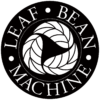Exploring Nicaraguan coffee
Nicaraguan coffee beans have really grabbed our attention. If you’re a frequent customer of Karvan, you’ll know why. In 2020 we roasted the Nicaragua El Volcáñ and the Cup Of Excellence winner Nicaragua Santa Rosa. These two Nicaraguan coffees left a delicious memory on our palate. We’ve continued to keep a close eye on Nicaraguan coffees. Discover more about this speciality coffee country below. It’s worth your attention.Where’s Nicaragua?
If you’re unfamiliar with Nicaragua, let us introduce you! In Central America, below Honduras and above Costa Rica (which are also excellent coffee regions). Nicaragua is renowned for its tropical landscape, stunning lakes, great beaches and incredible biodiversity! …Have you got the travel bug yet? Coffee growing is mostly in the West, in regions such as Jinotega, Matagalpa and Nueva Segovia. Incredible rainforests and volcanoes live in this area… With some volcanoes still active… yikes!Coffee History
Coffee beans were first introduced to Nicaragua in 1796. At the beginning of Nicaragua’s coffee journey, their focus was on quantity. Farming large amounts of coffee cherries were paramount, which meant quality took a step back. The flavour of the coffee beans wasn’t anything to write home about. It wasn’t until recent years that Nicaragua entered the speciality coffee market. Quietly, Nicaragua has been improving their farming practices, refining its processes and perfecting the quality of its green beans. Today, they’re a well sought-after coffee origin, with their beans taking the spotlight at roasteries across the globe.Special Features
Altitude:
95% of Nicaraguan coffee is strictly high grown (SHG). SHG is defined as coffee that is grown above 1200 MASL and plays an important role in acquiring a flavoursome coffee bean. Higher elevations = better coffee. Why? Because it allows more time for the coffee cherries to grow and develop. This results in a more nutrient-dense bean. Other origins that also have the SHG certification include Kenya, Costa Rica and Guatemala.Processes:
Wet (aka washed) processing is the most popular coffee processing method in Nicaragua.Shade-grown coffee:
Nicaragua coffee cherries are mostly shade-grown. This is a conscious choice of the farms, which involves utilising surrounding trees and forms of shade to create an ideal environment to grow the coffee. There are lots of benefits to shade-grown coffee. Growing under shade (much like high elevations) allows the coffee cherries to develop slower. Coffee cherries have more time to enhance the delicious flavours hidden in the green beans. In addition, shade-grown coffee is better for the environment! Shade-grown coffee makes use of the beautiful forestation on the farm with some farms even growing more trees! However, many farms across the globe are choosing sun-grown coffee over shade-grown. This is because sun-grown coffee is quicker. Although this leads to higher production, the sun quickens the growing processing and negatively impacts the coffee flavour. Plus, sun-grown coffee often requires the removal of fauna, causing major issues of deforestation.Varietals:
The most common varieties in Nicaragua include:- Caturra.
- Catimor.
- Bourbon.
- Yellow & Red Catuai.
- Margogoype (aka Elephant beans).
Harvesting:
October–March.Flavour:
Speciality Nicaraguan coffee delivers a medium and balanced body with a sweet and caramelly aroma. It will spoil you with flavours varying from fruity and floral to chocolatey and smooth. Our recent Nicaragua Peralta Estate Miriam offers mouthwatering dark chocolate smoothness with a pop of light tangy pomegranate. A must-try. Nicaraguan coffees are reminiscent of the country’s Central American neighbours, although softer in acidity.Try Nicaragua coffee beans
The best way to understand a coffee origin is by taste. Browse our selection of single origins. Find our latest Nicaraguan… and enjoy!Coffee Origin & Taste
The best way to understand the profiles of the coffee is to taste them all and enjoy



